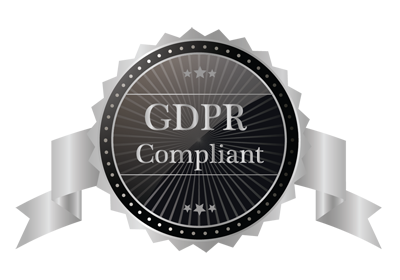Event planners are responsible for orchestrating flawless gatherings, from intimate corporate meetings to large-scale conferences. While attention to detail, impeccable organisation, and seamless execution are paramount, there’s an often-overlooked aspect of event planning that’s crucial in today’s digital age: ensuring the privacy and security of sensitive information.
This is where bug sweeping comes into play.
What is Bug Sweeping?
Bug sweeping, also known as Technical Surveillance Countermeasures (TSCM), is the process of detecting and removing covert surveillance devices, such as hidden microphones, cameras, and other eavesdropping equipment. These devices, often referred to as “bugs”, can be used to illicitly gather confidential information, posing a significant threat to privacy and security.
Why Should Event Planners Be Concerned About Bugs?
Event planners often handle sensitive and confidential information about their clients, including financial details, strategic business plans, confidential product launches, and high-profile attendee lists.
Any breach of this information could lead to serious consequences, including damage to client relationships, legal ramifications, reputational harm, and financial losses.
How Can Bugs Compromise an Event?
Covert surveillance devices can be planted in various locations, including:
- Meeting rooms
- Conference halls
- Hotel suites
- Boardrooms
- Event venues
These bugs can transmit audio, video, or both, allowing unauthorised parties to eavesdrop on confidential discussions or capture sensitive visual information.
What are the Signs That a Venue Might Be Bugged?
While professional bug detection requires specialised equipment and expertise, there are some potential indicators that a space might be compromised:
- Unexplained interference on electronic devices
- Unusual sounds or static on phone lines
- Small, unexplained holes in walls or furniture
- Displaced ceiling tiles or light fixtures
- Unexpected wires or antennas
However, it’s important to note that modern surveillance devices can be extremely small and well-hidden, making professional bug sweeping services essential for thorough detection.
How Does Bug Sweeping Work?
1. Physical Inspection
The bug sweeping process begins with a detailed physical inspection of the space. During this step, professionals conduct a thorough visual examination to identify any signs of tampering or suspicious objects that might indicate the presence of hidden surveillance devices.
2. RF Detection
Next, advanced RF (radio frequency) detection equipment is used to scan the area for any wireless transmitting devices. This crucial step helps identify active bugs that might be sending out signals, such as hidden microphones or cameras.
3. Non-Linear Junction Detection
Non-linear junction detection is then employed to locate electronic components, even if they are not currently transmitting. This technique is particularly effective at finding hidden circuits and semiconductors within devices that are powered off or in standby mode.
4. Thermal Imaging
Thermal imaging is used to detect heat signatures that may be emitted by concealed devices. This step helps identify electronic equipment that could be hidden in walls, furniture, or other areas, even if they’re not easily visible.
5. X-ray Scanning
In cases where suspicious objects or areas need further investigation, X-ray scanning is performed. This non-invasive technique allows professionals to examine the contents of items or structures without causing any damage, ensuring a thorough inspection.
6. Removal and Countermeasures
If any surveillance devices are discovered during the sweep, they are carefully removed to prevent any further breach of privacy. Additionally, security experts recommend and implement countermeasures to enhance protection and prevent future intrusions.
Why is Regular Bug Sweeping Important for Event Planners?
Event planners should consider regular bug sweeps for several reasons:
- Protecting client confidentiality – Ensuring that sensitive discussions and information remain private is crucial for maintaining client trust.
- Protecting business interests – Preventing corporate espionage and protecting proprietary information from competitors.
- Legal compliance – Many industries have strict regulations regarding the protection of sensitive data.
- Reputation management – Demonstrating a commitment to security can enhance an event planner’s professional reputation.
- Peace of mind – Knowing that a venue is secure allows for more open and productive meetings.
When Should Event Planners Consider Bug Sweeping Services?
Bug sweeping should be considered in various scenarios, including:
- Before important business meetings or conferences
- When dealing with high-profile clients or sensitive topics
- Prior to product launches or strategy sessions
- In cases where information leaks are suspected
- As a regular part of venue security protocols
How Often Should Bug Sweeps Be Conducted?
The frequency of bug sweeps can depend on various factors, including:
- The sensitivity of the information being discussed
- The profile of the clients or events
- The perceived level of risk
- Any suspicions of information leaks
For high-security environments, monthly or even weekly sweeps might be necessary. For others, quarterly or bi-annual sweeps may suffice. A professional TSCM service can help determine the optimal frequency based on your specific needs.
Protecting Privacy and Ensuring Successful Events with Advanced Sweeping
By incorporating professional bug sweep services into your event planning process, you demonstrate a commitment to security that will set you apart in the industry. You’ll not only protect your clients’ interests, but also enhance your reputation as a thorough and trustworthy professional.
Ready to enhance your event security? Contact us today to learn more about our professional bug sweep services and how we can help you protect your clients’ confidential information.
 info@sweeping.co.uk
info@sweeping.co.uk www.sweeping.co.uk
www.sweeping.co.uk UK 03450 343945
UK 03450 343945




